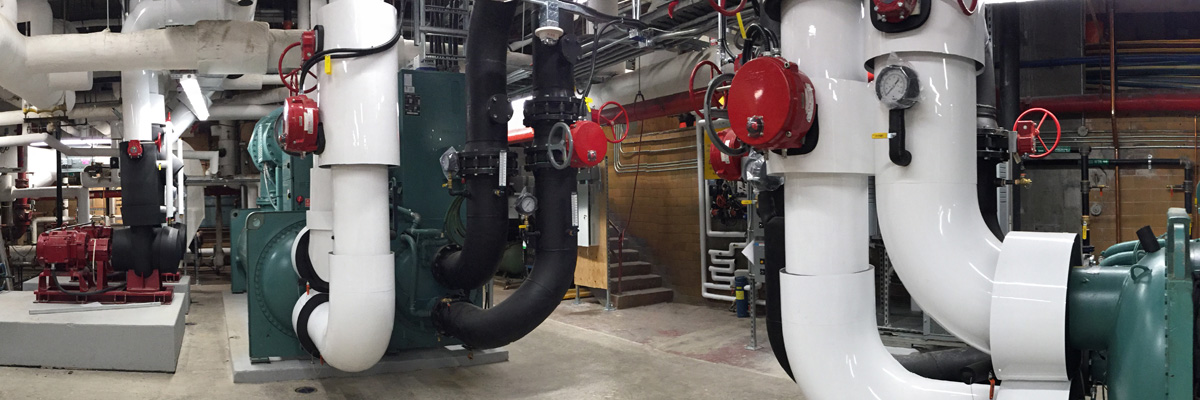Kerr Hall’s chiller plant: Our coolest new infrastructure

As the university is set to begin shoulder season, the transition period from heating to cooling, its newest major infrastructure project is celebrating its successful first season in use! The Kerr Hall Chiller completed its commissioning (a series of rigorous tests and inspections) in August of 2020 and this summer of 2021 has been its inaugural cooling season!
The university’s main central chiller plant is nestled in the sub-basement of the Library Building (LIB). Electric chillers transfer heat in a loop that sends cold water through pipes to be used for air conditioning and expels unwanted heat from the building through rooftop cooling towers. As the university continues to grow and the demands on our infrastructure increase, the central chiller plant will be outgrown.
Supporting growth and improving reliability
As an initiative to support growth, sustainability and health and safety at TMU, Facilities Management and Development installed a new chiller plant in the basement level of Kerr Hall South (KHS). This new chiller plant increases our cooling capacity and provides redundancy to prevent service interruptions when maintenance and repairs are required in the central chiller plant.
Built in 1964, Kerr Hall was previously heated using a system of boilers in the KHS basement that were decommissioned when TMU switched to a more sustainable district energy source. The building was once cooled by its own modest chiller plant, which shared space in the KHS basement boiler room. This boiler room became the site of the new chiller plant to capitalize on existing space and infrastructure.
Together, the chiller plants in LIB and KHS cool up to 2.9 million square feet!
What work was done
Contractor crews first removed the decommissioned boilers, old chillers and accessory equipment. They made structural enhancements to the building to support the new basement equipment and rooftop cooling tower and to facilitate expansion to future-proof our infrastructure demands.
Workers temporarily removed and rebuilt a section of the KHS exterior wall to bring in the enormous equipment and took advantage of existing and unused chimney and ventilation shafts to connect the basement equipment to the rooftop cooling tower.
Once equipment was in place, it was connected to piping. The chiller plant’s digital control system was then integrated into the campus’ building automation system that allows its operations to be completely monitored and controlled remotely.
The system is now fully functional, providing cooling for Kerr Hall and other buildings.